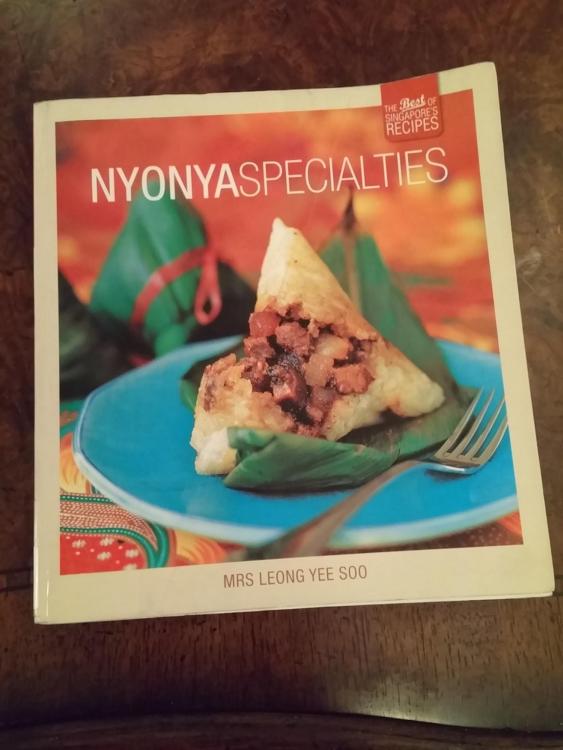
KennethT
participating member-
Posts
6,941 -
Joined
-
Last visited
Content Type
Profiles
Forums
Store
Help Articles
Everything posted by KennethT
-
@quiet1 I saw that done everywhere we went when my wife and I spent a week in Saigon last year...
-
Well, maybe not so soon... July.... But my wife and I are headed back to: This time, central Vietnam - specifically Hoi An and Hue (and some stuff in between as we go from one to the other). We just pulled the trigger after I found tickets from NYC to Saigon, round trip, for about $1000 pp on EVA. I don't think I've ever seen flights to SEAsia that cheap.... I can't even fly to Europe for that price, and it's a lot closer! So, if anyone had been to that area and has any suggestions, I'm all ears (or eyes in this case)
- 10 replies
-
- 15
-

-
Looking forward to it @Shelby!
-
@paulraphaelAgreed...
-
What about refrigeration? Don't most centrifuges require it since the spinning creates a lot of heat?
-
Thank you!!!!
-
What happened at around 45000 sec? Was that a door open event?
-
Loving it... don't stop!!!
-
The more I study this book, I realize that I don't really know who its intended reader is... The dishes seem to be a "greatest hits" of Peranakan dishes - many of which I saw when I was at the Peranakan restaurant on my last trip to SG - check out my blog for photos, etc... but some ingredients and technique descriptions are so vague.... I find it interesting that the author does not list the amount of coconut milk used in various recipes - but instead, has the cook make their own coconut milk for each dish! So, instead of using 300ml of coconut milk (for example), the author would have you grate 700g of fresh coconut and squeeze to get the coconut milk (she calls #1 Coconut milk, which I imagine is actually coconut cream). She'll then have you add water to the grated coconut to make #2 coconut milk (what I guess is coconut milk). But, I think the book assumes that the reader already has an intimate knowledge of the cooking techniques associated with this cuisine. In addition to the chilli/curry powder issues I described above, it uses such vagaries as: -an ingredient called Streaky Pork (not defined anywhere) -giving directions for deep frying a certain dish, she says "In a heated wok, add cooking oil and heat until very hot" -after marinating chicken, "Place chicken in the sun to dry thoroughly" -for Satay, the main ingredient is just "Pork" - with no specification as to the cut -instructions for making a curry powder for meat: "Wash [whole spices] separately, drain well, and dry in the sun".... put the ingredients on a tray, "Heat oven slightly" and toast the tray of [spices]..... what is the temperature equivalent of "heat oven slightly"? Maddening.... I really want to like this book, and use it, but I wish I could ask questions of someone to help out with the stuff that is vague.
-
In the USA and Canada, no home appliance can draw more than roughly 1800 Watts since domestic, 120 Volt circuit breakers are only rated for 20 Amps. In Europe, where the wall voltage is 230V nominal and the circuit breaker is rated for 10 Amps, you can then draw 2300 Watts.
-
@rarerollingobjectLove it so far!!! Those mantis shrimp look great! The ones I had when I was there (in the summer, so maybe out of season?) they were tiny and overcooked - barely worth the effort to remove them from the shell..
-
I got this book from my local library: I have a question for those of you who do or have done this type of cooking - the book refers to an ingredient called "chilli powder" - is there a standard ingredient in Singapore with this name? Here in NYC, I can get more than 20 different chili powders, plus what we in the US call chili powder, which is different than the Asian or Indian versions (the US chili powder is a blend of spices with cumin, etc.) So, if I had my choice, what type of powdered chili should I get for the most authentic taste? I assume it would be a non-smoked chili - so no Ancho or Chipotle... maybe use Cayenne? Or a medium-spicy Indian chili? The book also references using "dried chilli" - what type should I use here? I assume that standard Thai chilis would be too spicy. Andy Ricker, in his Pok Pok book, recommends using Puya chilis to stand in for the moderately spicy dried chilis available in Thailand... Should I just use those? Finally, the book calls for "Curry powder" - but, by definition, this is a blend, and I'd assume that every market or manufacturer would have a different mix of spices in their version... Are there any standards that people of this heritage, who grew up watching their grandmothers cook, would just know so the book feels like it wouldn't have to elaborate on?
-
I would think that quickly releasing the pressure after pressure cooking would be enough to emulsify the soup... no further boiling required unless you want to reduce it.
-
Rather than sugar, why not use isomalt as a primary ingredient in the binder? It's not as sweet as sugar, but has similar structural properties. El Bulli used to make a dish where they would make a crisp using puffed corn (a common street snack in Barcelona)... they would take a sheet of Obulato - which is a very thin Japanese edible paper made from potato starch and dust onto it a sugar powder made by melting together 50% isomalt, 25% glucose and 25% fondant and bringing to a light caramel. Pour onto a silpat and cool, then blitz in a spice grinder to make the powder. Anyway, you add a heavy dusting of the powder to the obulato which acts as a base (it dissolves immediately in the mouth so you don't even know it's there) and add the solid objects - then put in a hot oven for a few seconds to remelt the sugar mixture. Once cooled you have a very delicate savory tuile. I've done variations on this by adding spices to the sugar mixture - star anise, cinnamon, clove, but you could use anything....
-
My wife and I used to go here for dinner every 4-6 weeks or so over the last several years, but stopped maybe a year or so ago. While the food was always good, the experience had become (or maybe always was, but we just became more sensitive to it) hard to tolerate with their uncomfortable chairs, blaring music - it had gotten to the point where the last time we were there, although we sat right next to each other, we could barely talk to each other since it was just so loud - we literally had to shout over the din to say anything... and neither of us are hard of hearing... So they were closed for the last few weeks for some "comfort renovations" - they got rid of the old stumps that were used as seats and have now replaced them with chairs with backs - granted, they're unpadded metal, but they're definitely more comfortable than before. We also noticed a great reduction in ambient noise - we wound up sitting in the same seats in which we've sat many times, but this time we had no problems talking all night long. It wasn't quiet, but certainly not overly loud - it had a good energy. They also changed the menu quite a bit since we were there last. We really enjoyed all the dishes we had (we split 6 of them) and the service was great - they coursed things out very well - we never felt rushed, but also didn't wait around too long either. All in all, a major improvement from our last few experiences there, and I am happy to say that it is now back in the rotation!
-
I find that cooked things, in general, in my refrigerator (which is kept very cold - just above freezing) last a week - no spoilage issues until after that - and even then sometimes it's a few days over a week. But, for every degree warmer, bacterial growth increases by a lot more, so I think it really depends on your refrigerator. Another issue - does the pie have a crust? It doesn't seem so, based on the ingredients - but if it did, I'm sure the crust integrity/quality would be much more problematic than spoilage issues! I have no experience with freezing custards (other than ice cream, but that's different) - so I don't know if it would make it grainy or separate upon thawing...
-
True - but there are lots of popular candy bars (that are quite tasty) made with shortening. I got the impression that shelf-life was important to the poster, which I think would be easier to control with shortening than it would be with butter. Why would someone care about shelf life if just making a small amount for their own consumption? I assumed he was making larger volumes with intent to sell...
-
Rather than using butter, what about some kind of shortening? Sure it's not the healthiest but isn't that the point of a bonbon?
-
I haven't been back to HK since 2011, but I have some friends who live there. They say the roast goose at Yung Kee is just as good as ever...
-
I've really missed the real Banh Mi ever since returning from Saigon last winter. That bread is so unique - although some places in NYC try to do it, none of them are even remotely close to the real thing. The crust of the faux-Banh is just way too tough - it should be tender, yet shatteringly crisp, and light and tender inside. Thanks for this video - I haven't had a chance to watch it yet, but I will do so soon!
-
@djyee100Beautiful!
-
Thanks Shelby! I enjoyed following along!
-
I like Rao's sauce also... definitely the best jarred sauce I've ever had. On the photo, did you take the photo in "selfie" mode, or did you use the front facing camera? Photos taken with the "selfie" camera always come out as mirror images.
-
@Anna NI'm with you... not a fan of beans or pulses... it's not the flavor that I don't like - it's that grainy texture. I've never had a bean/pulse dish that didn't have that grainy texture.... except once, but that was a rare fluke - especially because I have no idea what was done to make it that way. It was about 6 years ago, when I was fortunate enough to go to El Bulli - one of the courses was called "Cala Montjol lentils" or something like that - which is named after the area where the restaurant was located.... Their texture was completely smooth - and they melted in your mouth... I imagine they pureed the lentils, and put them through a super fine sieve - like a superbag or something and then spherified them to look like lentils again... or something to that nature...


